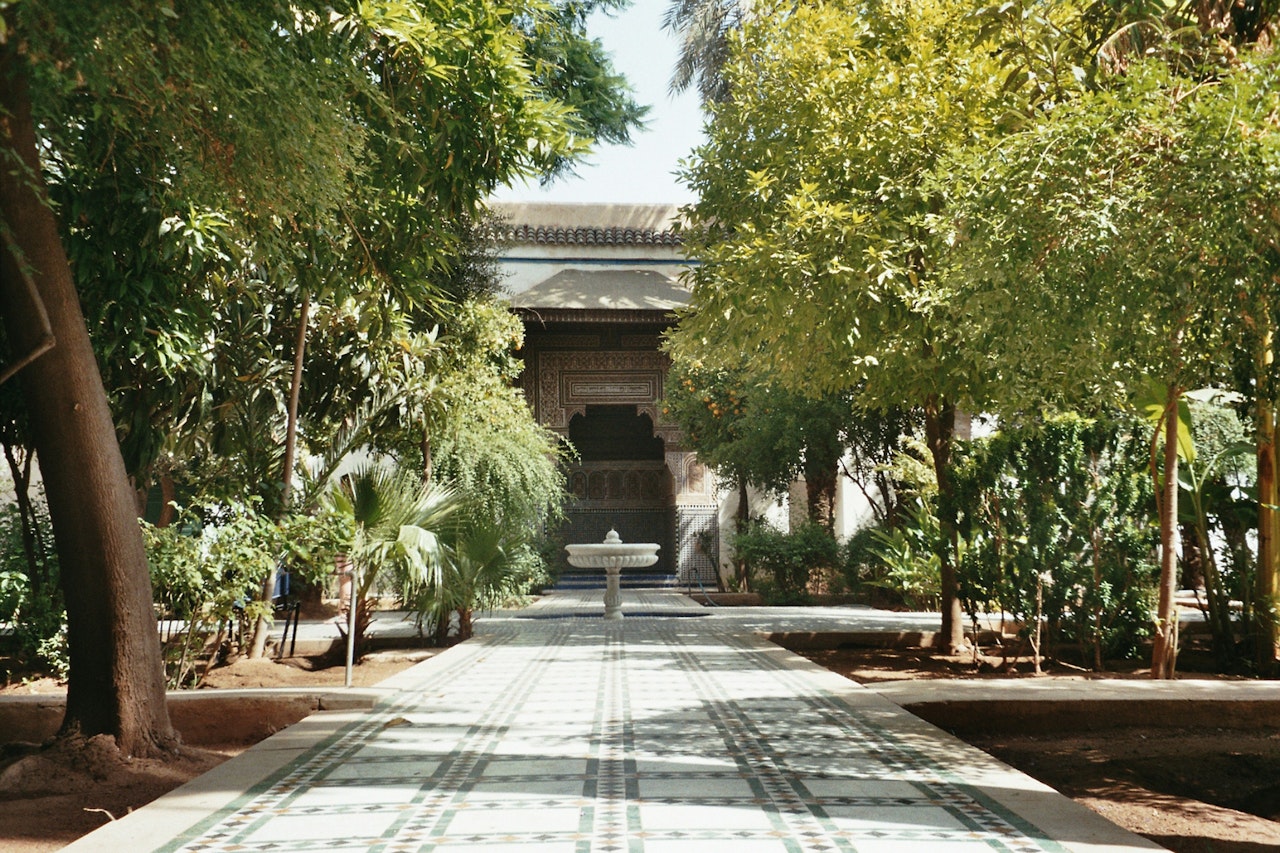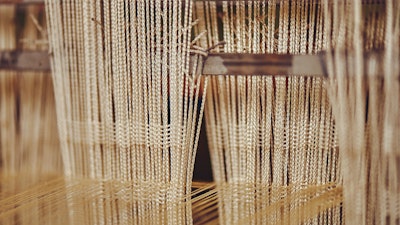Contemporary Textile Art on a Traditional Loom with Soumiya
Discover Moroccan textile arts with master artist Soumiya in Marrakech. From sourcing natural and unexpected materials in the medina to crafting your own textile art, learn to experiment with different weave structures, compositions, and sculptural elements. Outside the studio, meet Soumiya’s artist friends, explore Marrakech’s ancient medina, hike the Atlas Mountains, and savor local cuisine.
- Snacks, Coffee, & Tea
Pricing
- One Guest
- USD $1340
- Additional guest(s) (max 3)
- USD $565
Meet the Artist
Soumiya is a Moroccan artist whose sculptural textile work bridges architecture, craft, and contemporary design. Trained as an architect, she combines structural thinking with the tactile language of thread, creating pieces that often serve as permeable walls, windows, or light filters. Honored with the title Maalma—once reserved for master artisans of the Medinas—Soumiya is recognized as a guardian of textile traditions and a tusserande, or weaver of stories. She has trained nearly 5,000 artisans across Morocco, revitalizing endangered techniques and inventing new ones to keep textile traditions evolving.
Drawing inspiration from North African nomadic heritage, she works with natural, recycled, and unexpected materials like wool, raffia, hemp, plastic tape, leather, copper wire, feathers, and stones. She sources these from Marrakech’s medina and surrounding nature, then experiments on her eight looms to create new textures and visual languages. Her work draws on ancestral Moroccan techniques such as loom embroidery, lace, and complex stripe weaving, which she restores and reinterprets in a modern context. Incorporating photography and sculptural elements, her textiles act like soft architecture—defining space, filtering light, and inviting sensory connection.
For Soumiya, creation is a transformative process, a way to reach the universal through the intimate. “I feel as if I’m interpreting a score that a soft and melodious voice pours into my soul,” she says.
She welcomes you to explore materials and the rich history of North African textiles. Her aim is not to preserve it in static form but to let it breathe, evolve, and connect across generations and cultures.
Drawing inspiration from North African nomadic heritage, she works with natural, recycled, and unexpected materials like wool, raffia, hemp, plastic tape, leather, copper wire, feathers, and stones. She sources these from Marrakech’s medina and surrounding nature, then experiments on her eight looms to create new textures and visual languages. Her work draws on ancestral Moroccan techniques such as loom embroidery, lace, and complex stripe weaving, which she restores and reinterprets in a modern context. Incorporating photography and sculptural elements, her textiles act like soft architecture—defining space, filtering light, and inviting sensory connection.
For Soumiya, creation is a transformative process, a way to reach the universal through the intimate. “I feel as if I’m interpreting a score that a soft and melodious voice pours into my soul,” she says.
She welcomes you to explore materials and the rich history of North African textiles. Her aim is not to preserve it in static form but to let it breathe, evolve, and connect across generations and cultures.
VAWAA Includes:
- Explore the craft of traditional weaving, working with different yarns, shades, techniques, and materials to create your own textile artwork or a meaningful archive of samples and ideas.
- Search for materials in the heart of Marrakech’s medina, visiting haberdasheries, hardware stores, and natural landscapes.
- Experiment with a variety of looms to explore scale, tension, and technique before choosing one that fits your project.
- Learn to warp, assemble, and thread your loom based on your chosen yarns and weave.
- Explore different textures and techniques to develop your own visual and tactile language.
- Dive deeper into advanced weaving techniques—broaching, geometric forms, contrasts in texture and light, and the incorporation of sculptural elements such as stones, feathers, shells, beads, driftwood, and recycled materials.
- Receive 3 hours of daily personalized guidance from Soumiya each day focusing on material selection, technique, color, and creative direction, with additional support from her studio collaborators and time to practice.
- If extending duration, option to take a break after Day 4 to visit artisan cooperatives, trek the Atlas Mountains, or explore historical and cultural landmarks on your own.
- If time permits, share a Moroccan lunch with Soumiya’s friends like renowned artist Hassan Hajjaj in Sidi Ghanem, visit a traditional Moroccan slippers atelier, or her friends in Tamesloht and Lalla Takerkoust to experience rural craftsmanship and hospitality.
- Basic materials are included but you can purchase any special materials for your project in the medina.
Explore Marrakech
Marrakech unfolds in a thousand shades of earth—ochre, warm browns, and vibrant oranges—that color its ancient walls and bustling streets. A UNESCO World Heritage city, it is a striking blend of graphic contrasts, where timeless Islamic architecture meets bold Art Deco and modern design, creating a mythical atmosphere that captivates every visitor. Known as the Garden City, Marrakech invites you to wander its souks, stumble upon hidden riads, or discover a jazz club tucked deep within the medina. More than a destination, it is an epicenter of creativity and craft, where artisans lead a new renaissance—preserving and reinventing centuries-old know-how. Here, tradition and innovation are tightly woven, offering travelers a connection to a living culture that breathes through every handmade piece and artistic creation.

Additional Details
The best time to visit Marrakech is between September and June, when the weather is mild and ideal for exploring the city. Highlights include the Marrakech International Film Festival in late November, the 1-54 Contemporary African Art Fair in February, Heritage Days in May, and the Orange Blossom Distillation Festival in March. July and August are best avoided, as the summer heat can be intense.
This session can be extended for up to 6 or 9 days. Please add a note in your booking request.
Adults 18 and older are welcome. Though the studio is wheelchair accessible, weaving on a four-frame loom requires good physical strength and full manual and joint skills.
Soumiya speaks French, Arabic and basic English. Her partner, Jad, speaks fluent English and Spanish, and can assist with translation if needed.
This session can be extended for up to 6 or 9 days. Please add a note in your booking request.
Adults 18 and older are welcome. Though the studio is wheelchair accessible, weaving on a four-frame loom requires good physical strength and full manual and joint skills.
Soumiya speaks French, Arabic and basic English. Her partner, Jad, speaks fluent English and Spanish, and can assist with translation if needed.









